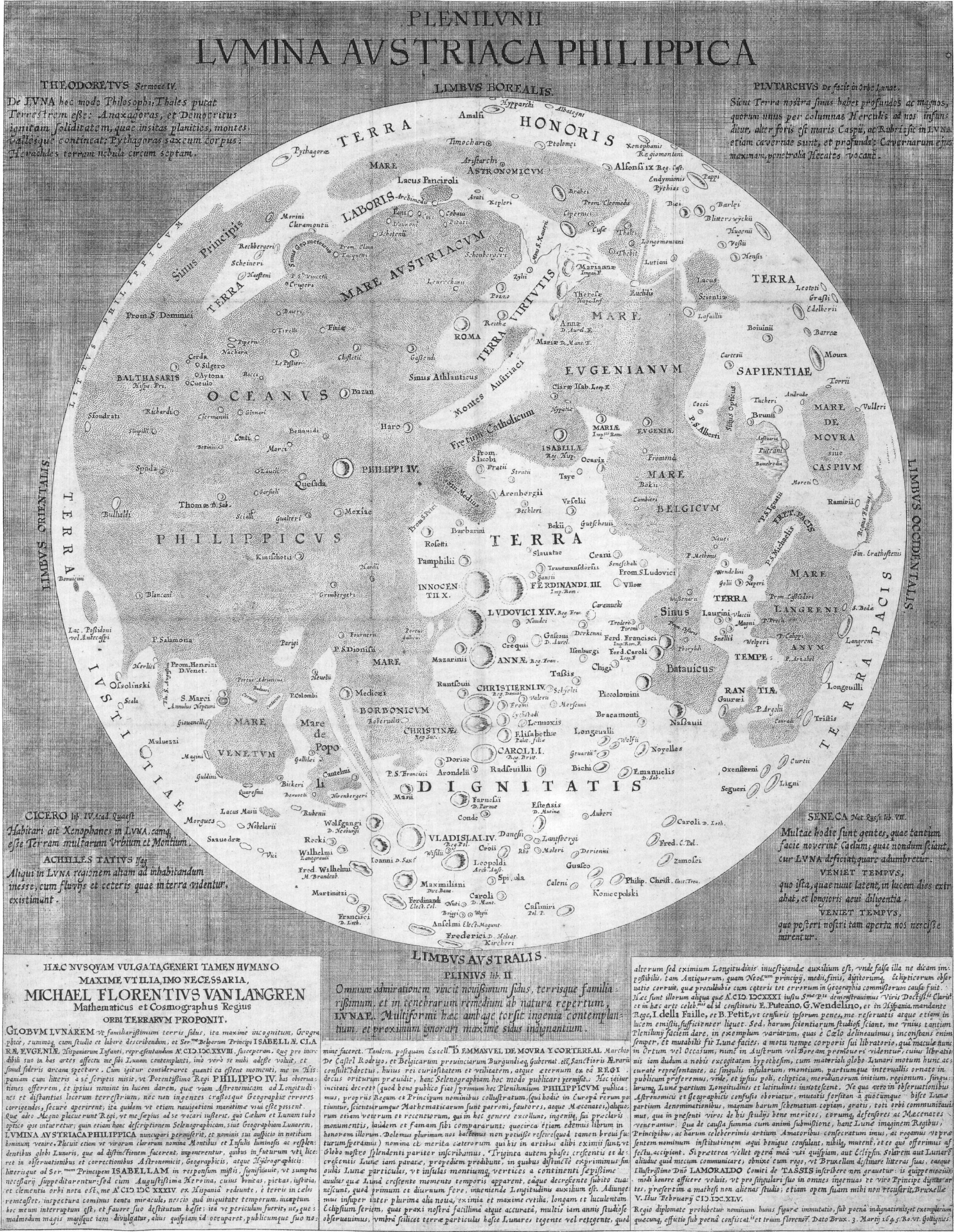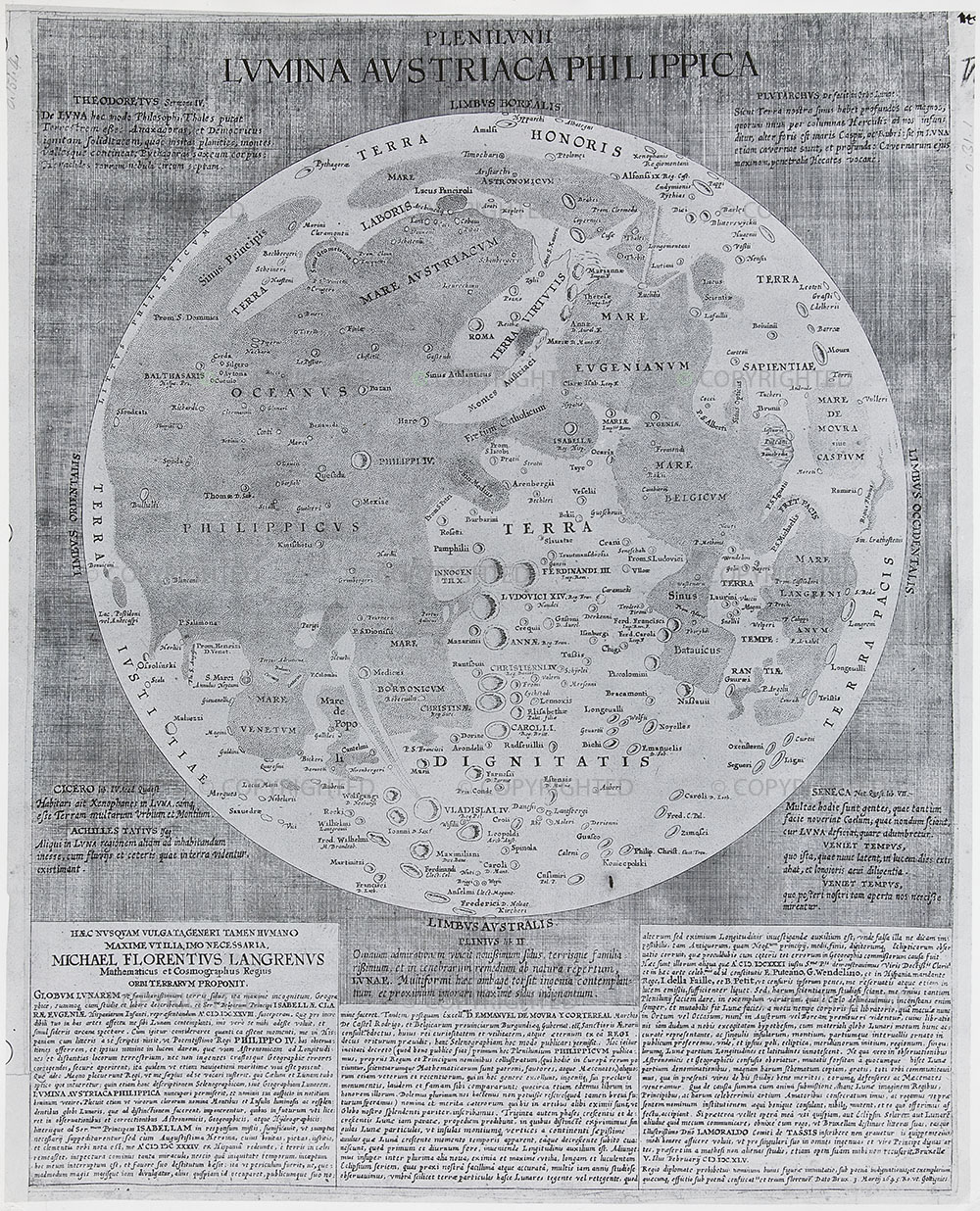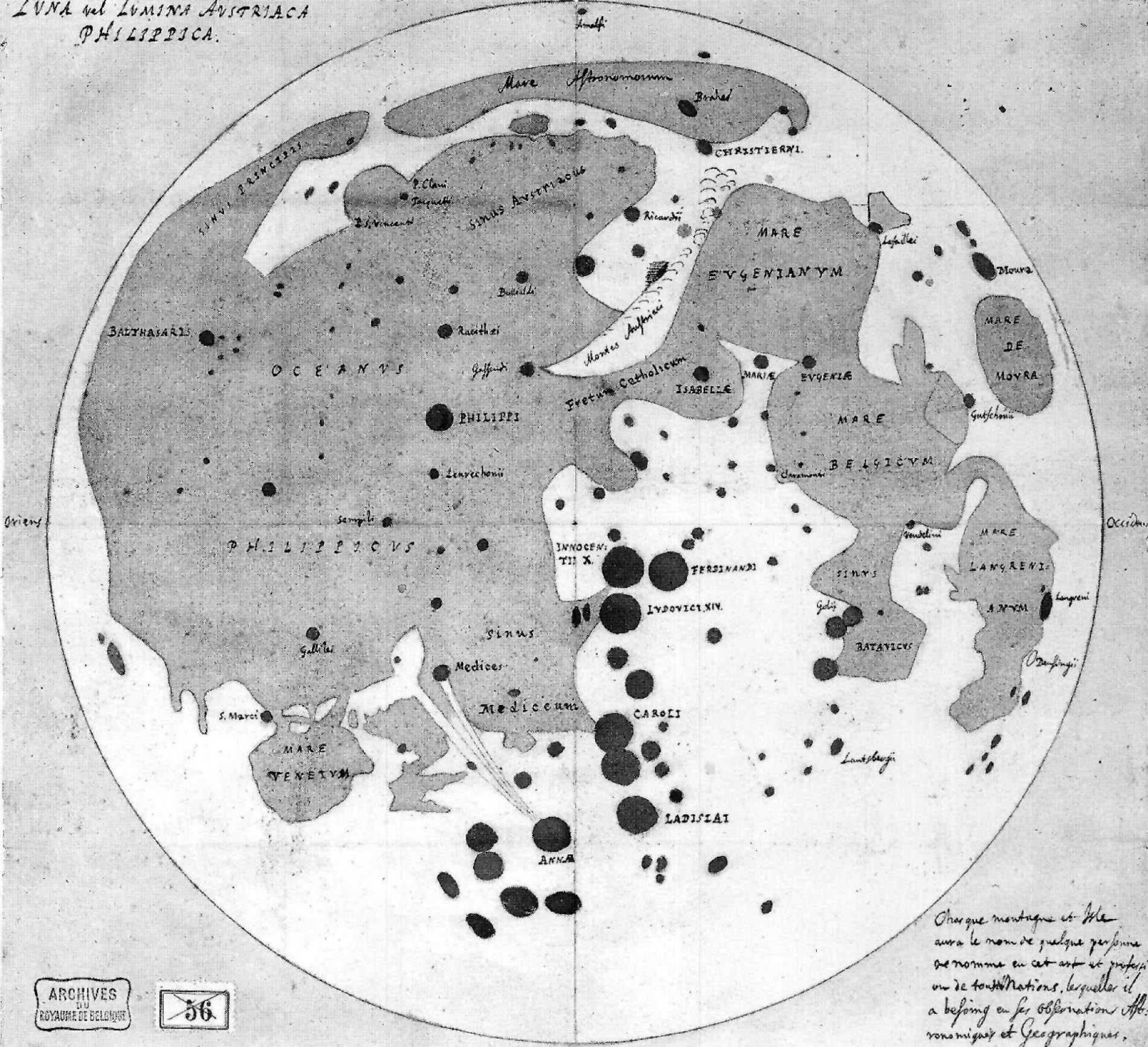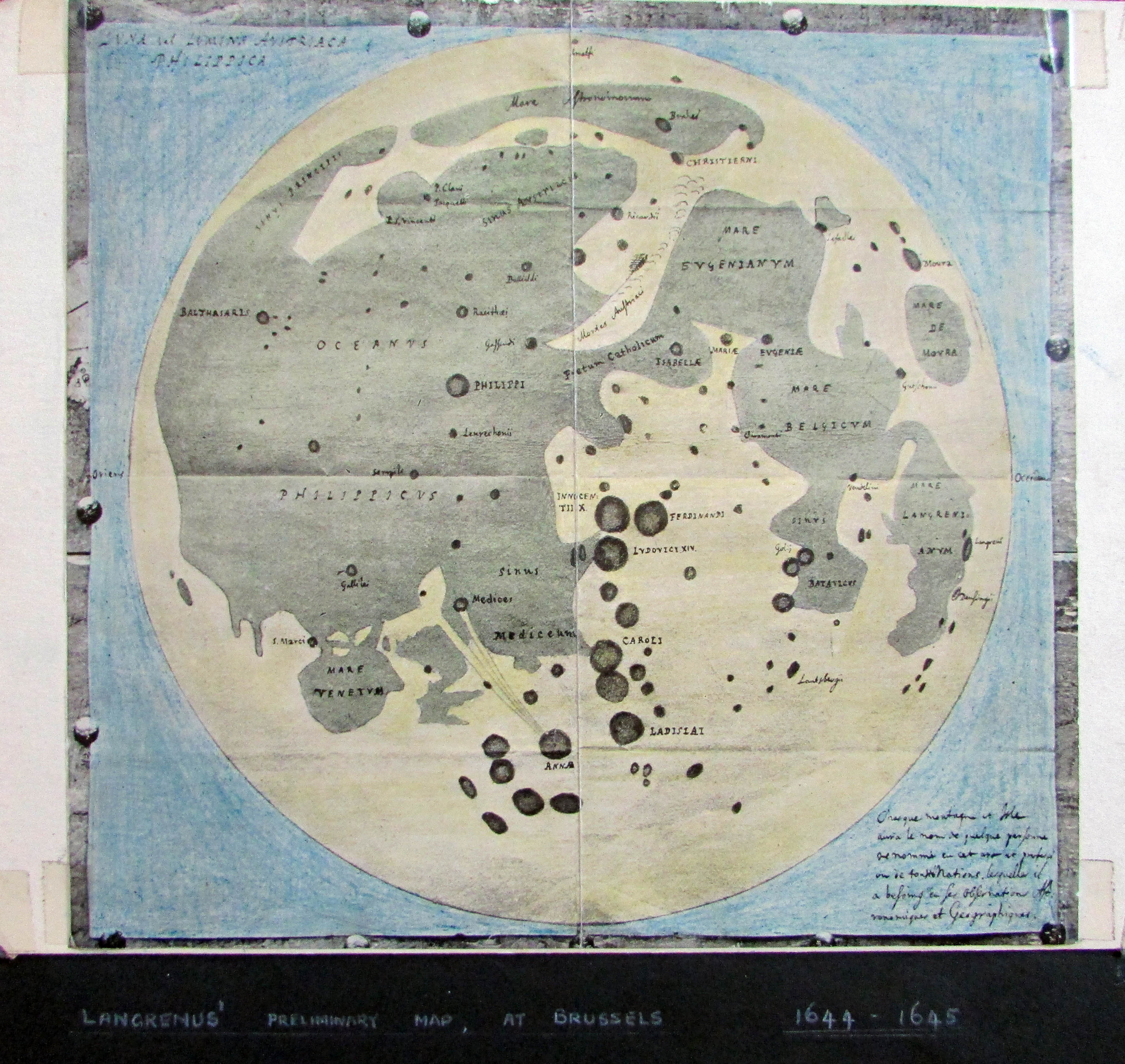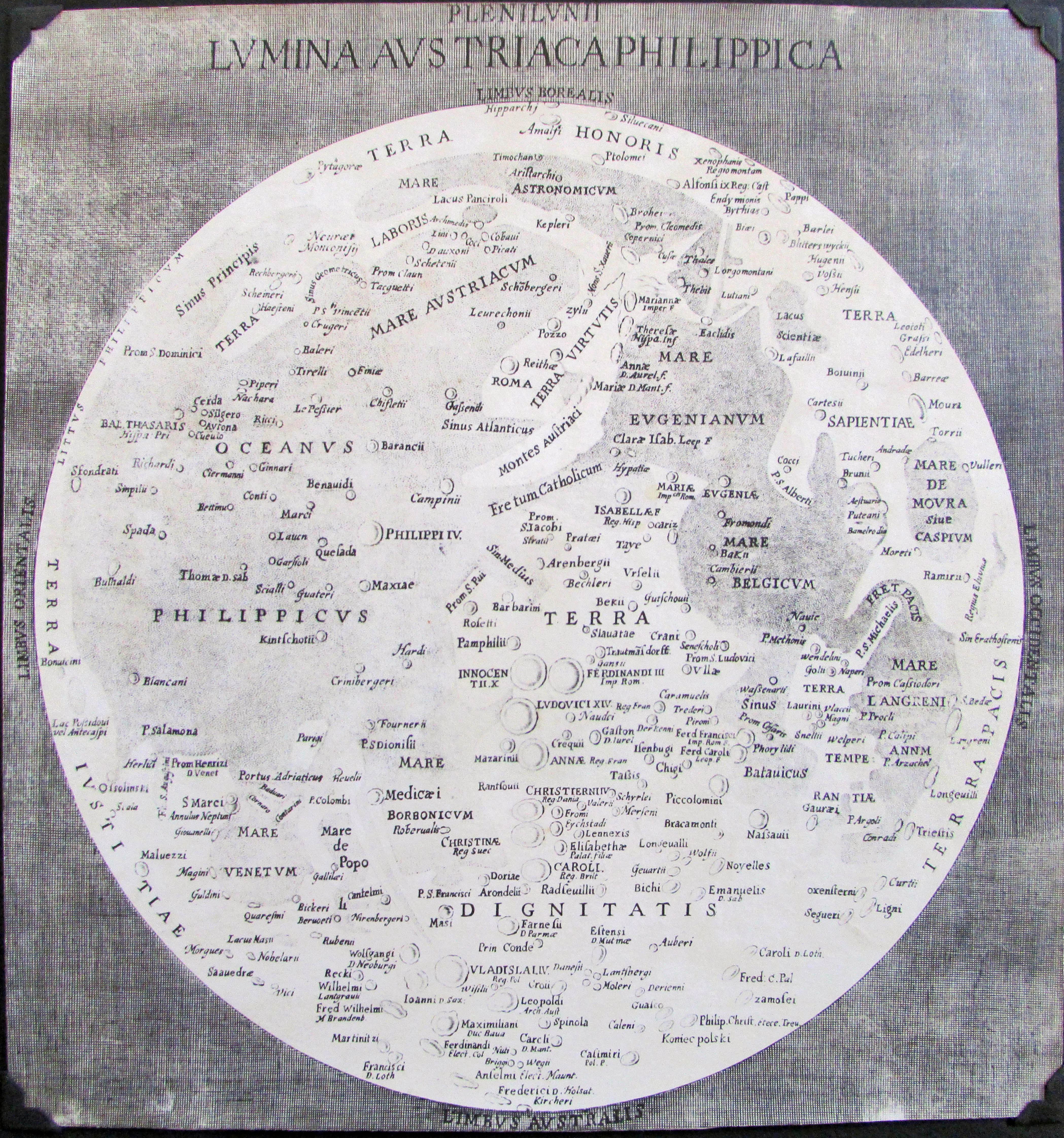Langrenus’ map of the Moon (1645)
Publication Date: 1645
Cartographer: Michael van Langern (Langrenus)
Source: Plenilunii lumina Austriaca Philippica. [By] Michael Florentius van Langren. Copper engraving, 490 x 380 mm, diameter 340 mm. [Brussel 1645.]
Map type: Shade relief (from crescent moon observations) + albedo (from full moon observations) with nomenclature
Size: 34 cm diameter
The purpose of mapping the Moon began with a purely practical purpose: “As early as 1628, (Langren) conceived the idea of using the rotation of the moon—rather than its mere position in the sky—as a more accurate celestial clock. By timing the occurrence of sunrise or sunset on identifiable lunar peaks and craters, one would have a nearly continuous set of reference events with which local time could be accurately determined.” .. it required an accurate lunar globe or set of maps that named the peaks, craters, and other lunar features so that they could be easily recognized.
Van Langren spent a few years in the early 1630s at the court in Madrid, during which he attempted to enlist support for this project and made plans for the preparation of a collection of lunar maps and diagrams, together with a “user guide” containing instructions for the calculation of longitude from observations of the lunar features he would catalog. Because he would be the first to comprehensively map the lunar features, he proposed to have “the names of illustrious men applied to the luminous and resplendent mountains and islands of the lunar globe,” a prospect that evidently pleased King Philip”
(Source: Michael FRIENDLY, Pedro VALERO-MORA, and Joaquín IBÁÑEZ ULARGUI: The First (Known) Statistical Graph: Michael Florent van Langren and the “Secret” of Longitude. The American Statistician · May 2010)
“Van Langren’s contributions: he initiated the systematic naming of lunar
topography, he applied geographical clustering of names to the moon (areas with objects named after Frenchmen, Venetians, Dutchmen, female royalty, etc), he first used scientists to name lunar objects after, and he first used conceptual names; for land mass names he used concepts like dignity, peace, honour, virtue, work, wisdom and temperance. Finally, he adhered to a hierarchical principle by naming larger objects for more important persons.
In retrospect, he was also the first that used toponymy for propaganda, as most of the names he bestowed reflected the protagonists of the Habsburg power struggle for supremacy in seventeenth century Europe.
Copies of the lunar map by Van Langren can be found:
1st state: Leiden, Universiteitsbibliotheek, COLLBN 505-10-003
2nd state: Edinburgh, Royal Observatory, Crawford Library c15.6(4)
3rd state: Paris, Bibliothèque nationale, Cartes et plans GE D-17925
San Fernando, Real Instituto y Observatorio de la Armada, 17277/L-18 [bound
in John Flamsteed’s Atlas Coelestis (1729)].
4th state: Private collection”
Source:
- Krogt P van der, Ormeling F Michiel Florent van Langren and Lunar Naming
39×50 cm, engraving in copper.
Dutch version. Leiden Universiteitsbibliotheek.
Latin version: Bibliotheque National, Paris, Crawford Library, Edinburgh, San Fernando Library of the Observatory.
Without marginal text: Bibliotheque National et Universitaire, Strassburg
37,5×35 cm, copy of drawing, colored: terra=yellow, mare=light blue, craters=dark blue, background=light blue.
Algemee Rijksarchief, Brüssel, Karten-und Planabteilung , Inventar 7911.
Text: “Chaque montagne et isle aura le nom de quelque personne se nomme en cet art et profession de toutes Nations lesquelles il a besoin en ses observations astronomiques et geographiques.”
Resources:
- BOSMANS (Henri), La carte lunaire de VAN LANGREN conservée aux archives générales du royaume à Bruxelles Revue des Questions scientifiques, 3e S., n° 4, 1903, pp. 108-39
- Krogt P. (1995) Das Plenilunium des Michael Florent van Langren: die erste Mondkarte mit Namenseinträgen. Cartographica Helvetica. 11-12.
- Krogt P van der, Ormeling F Michiel Florent van Langren and Lunar Naming
The Brussels copy, hand colored by EA Whitaker
The Strassbourg copy. Courtesy EA Whitaker. It is a “counterfeit map” copied from the original with some names mis-spelled or missing (Whitaker p. 40).

